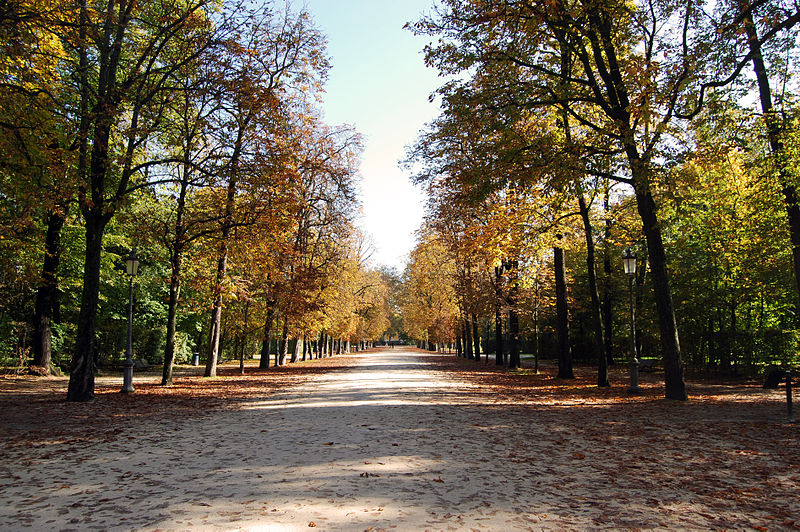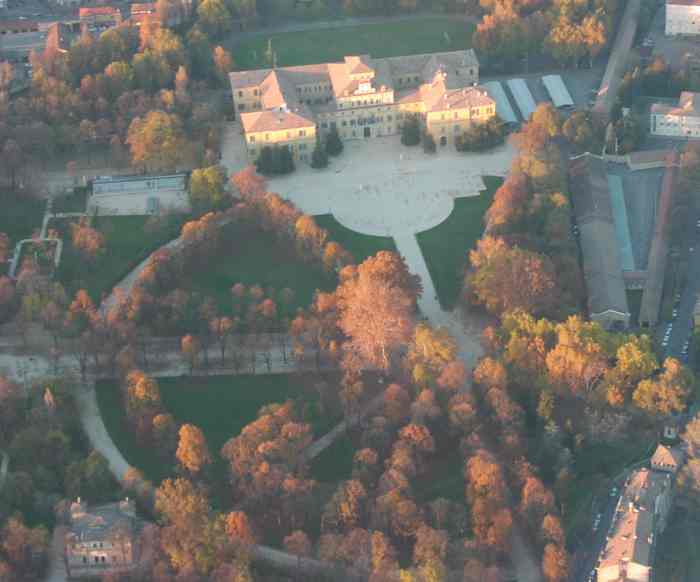
Giardino Ducale
This post is also available in:
 Italiano (Italian)
Italiano (Italian)
Giardino Ducale of Parma, also called “il giardino”, is located in the heart of the historic centre on the western shore of the stream. It is opened to the public and with its 208,700 squared meters and its 3.2 km of alleys represents the green lung of the city.
Ottavio Farnese, duke of Parma and Piacenza, had it realised in 1560, and the architect Jacopo Barozzi, also called il Vignola, designed the garden in order to make it become a decoration of the villa obtained by an ancient postern. In the garden were planted according to the taste of time rosemary and myrtle hedges, plane trees, alpine firs, fruit trees, vegetables and citrus, which were sheltered in warmed huts and thickets.
In 1690 Ranuccio II had a fish pool dug in front of the villa in order to have naumachias represented to celebrate the wedding of his firstborn.
During the war of the Austrian succession, the centuries-old trees were cut and burnt in 1745 by the troops.
With Filippo di Borbone, in 1749, the garden was renewed following the project Ennemond Alexandre Petitot in a French style garden and the statues of Jean Baptiste Boudard e Pierre Costant were added .
During the 18th century the Borbone family transformed the garden and added neoclassical sculptures of Boudard. After that, with the arrival of the duchess Maria Luigia in 1816 at Parma, the park was redesigned in an English style garden by Nicola Bettoli and was created also an orchard with plane trees, which are now present only in the central are of the Ètoile, in front of Palazzo Ducale.
After Italy’s unification (1861), the park became property of Parma’s municipality and was opened to the public: the boundary walls and the terraces were demolished to create new entrances in order to indulge its public function. These changes together with the scarce maintenance works and the improper use of certain areas gave a contribution to the park’s decay.
At the end of the 19th century, oaks and elms spread spontaneously inside the garden because of abandon and neglect. At the beginning of the 20th century, conifers were introduced together with exotic species which are still present. In 1920 on the island at the centre of the fish pool, Fontana del Trianon was placed (a reference to the gardens of Versailles), which had already been created in 1712 by Giuliano Mozzani, and represented the rivers Parma and Taro.
Nowadays, the park has been refurbished and brought back to its 18th century appearance, thanks to the installation of alleys and hedges of palissades of horse chestnuts (Aesculus hippocastanum) and lindens, the species which were mainly used when garden had been created, together with the recovery of statues, small templates and decorated vases.
This post is also available in:
 Italiano (Italian)
Italiano (Italian)
Contatti
Via Kennedi, 10 - Parma(PR)
0521 218889
urp@comune.parma.it
http://www.servizi.comune.parma.it/giardinoducale
Altre info
Ingresso gratuito
Tutto l'anno
Periodo estivo: 06.00-24.00; periodo invernale: 07.00-20.00



